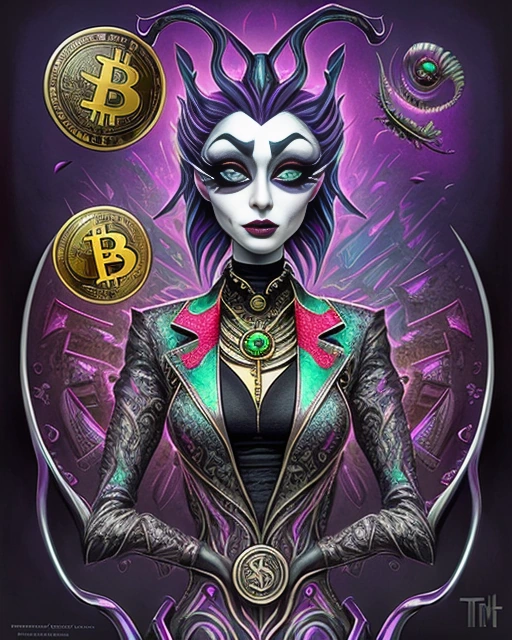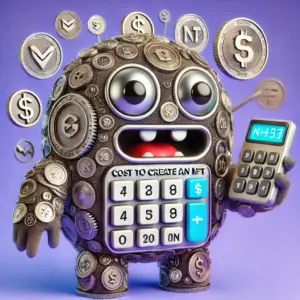The world of cryptocurrencies and NFTs is often shrouded in mystery and confusion. While both utilize blockchain technology, they differ significantly in their fundamental nature, use cases, and underlying value propositions. Understanding the distinctions between these two digital assets is crucial for navigating the ever-evolving landscape of the blockchain economy.
NFTs: A Digital Mark of Ownership
NFTs, standing for Non-Fungible Tokens, are akin to digital certificates of ownership. They represent unique, indivisible assets stored on blockchains, essentially a public ledger of transactions. NFTs can be used to represent various digital items, including artwork, music, collectibles, and even virtual real estate. Unlike cryptocurrencies, which are interchangeable units of value, NFTs are non-fungible, meaning each NFT is distinct and cannot be replaced with another. This unique characteristic is what grants them their inherent value.
Cryptocurrencies: Digital Currency for Transactions
Cryptocurrencies, on the other hand, are digital or virtual tokens that function as a medium of exchange. They are designed to be decentralized, meaning they are not controlled by any central authority, such as a government or bank. Cryptocurrencies rely on blockchain technology to secure transactions and maintain a transparent record of ownership. The most well-known cryptocurrency is Bitcoin, followed by Ethereum, which is also the platform upon which many NFTs are built.
Key Differences between NFTs and Cryptocurrencies
- Uniqueness and Interchangeability: NFTs are unique and indivisible, while cryptocurrencies are fungible and interchangeable.
- Use Cases: NFTs are primarily used to represent ownership of digital assets, while cryptocurrencies are used for transactions, investments, and payment systems.
- Tokenization: NFTs are tokens that represent ownership of digital assets, while cryptocurrencies are tokens that represent a unit of value.
- Marketplaces: NFTs are typically traded on specialized marketplaces, while cryptocurrencies can be traded on various exchanges.
- Target Audience: NFTs appeal to collectors, artists, and those interested in digital asset ownership, while cryptocurrencies target individuals seeking a decentralized currency or investment opportunities.
NFTs and the Art World
The advent of NFTs has revolutionized the art world, allowing artists to seamlessly create, distribute, and monetize their digital creations. NFTs have enabled artists to establish ownership over their work, protect copyright, and receive royalties from secondary sales. This has democratized the art world, opening up new avenues for artists to connect with collectors and establish their value.
NFTs and Beyond
The potential applications of NFTs extend far beyond the art world. They have the potential to transform industries such as gaming, collectibles, music, and even real estate. NFTs can represent unique characters, in-game items, virtual property deeds, and even intellectual property rights. This has the power to revolutionize ownership, monetization, and user experiences in these industries.
Further Exploring the Differences between NFTs and Cryptocurrencies
Uniqueness and Indivisibility
NFTs are unique and indivisible, meaning each NFT is a one-of-a-kind asset. This is in contrast to cryptocurrencies, which are fungible, meaning each unit is interchangeable with another unit of the same type. The uniqueness of NFTs stems from the data stored within their blockchain entries. This data can include the artwork itself, metadata such as the artist, creation date, and other relevant information. This unique identifier is what distinguishes one NFT from another, granting it its inherent value.
Use Cases and Tokenization
NFTs are primarily used to represent ownership of digital assets, while cryptocurrencies serve a wider range of purposes. Cryptocurrencies can be used for transactions, investments, and payment systems. They can also be used to create decentralized applications (DApps), which are software programs that run on the blockchain without the need for intermediaries.
NFTs and cryptocurrencies both utilize tokenization, a process of representing assets digitally on a blockchain. However, the nature of the assets being tokenized differs significantly. NFTs represent unique digital assets, while cryptocurrencies represent units of value.
Trading and Marketplaces
NFTs are typically traded on specialized marketplaces, such as OpenSea, Rarible, and SuperRare. These platforms provide a centralized environment for buying, selling, and showcasing NFTs. Cryptocurrencies, on the other hand, can be traded on various exchanges, such as Coinbase, Binance, and Kraken. These exchanges offer a wider range of cryptocurrencies and facilitate transactions between users.
Target Audience and Market Dynamics
NFTs appeal to collectors, artists, and individuals interested in digital asset ownership. The market for NFTs is often driven by factors such as rarity, popularity of the artist, and the perceived value of the digital asset. Cryptocurrencies, on the other hand, target individuals seeking a decentralized currency or investment opportunities. Their market dynamics are influenced by factors such as adoption, regulatory clarity, and overall market trends.
NFTs and the Decentralized Economy
NFTs are part of the broader movement towards decentralization, which advocates for the removal of intermediaries and the creation of a more equitable digital economy. NFTs can facilitate direct ownership and transactions between individuals, reducing reliance on centralized platforms and institutions. This has the potential to democratize access to digital assets and empower creators to control their work.
NFTs and the Future of the Digital Economy
NFTs and cryptocurrencies are poised to play a significant role in shaping the future of the digital economy. Their potential applications extend beyond the art world, impacting various industries and transforming the way we interact with digital assets. As these technologies mature and adoption grows, their impact on our daily lives is likely to become even more profound.
Conclusion
NFTs and cryptocurrencies are both emerging technologies with the potential to reshape our digital landscape. While they share some similarities, their fundamental differences in terms of uniqueness, use cases, and underlying value propositions make them distinct assets with unique applications. As these technologies continue to evolve, their impact on the world economy and our daily lives is likely to grow exponentially.







I do trust all the ideas you’ve presented in your post. They are really convincing and will definitely work. Nonetheless, the posts are too short for newbies. May just you please lengthen them a bit from next time? Thank you for the post.